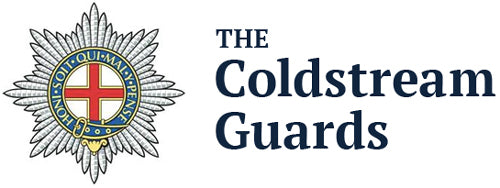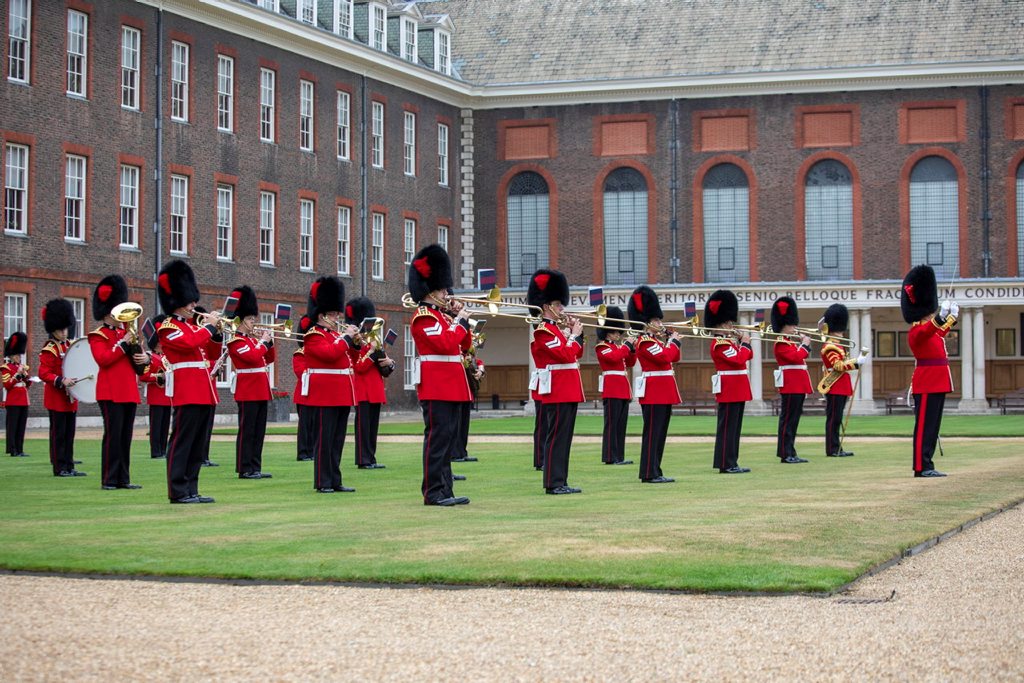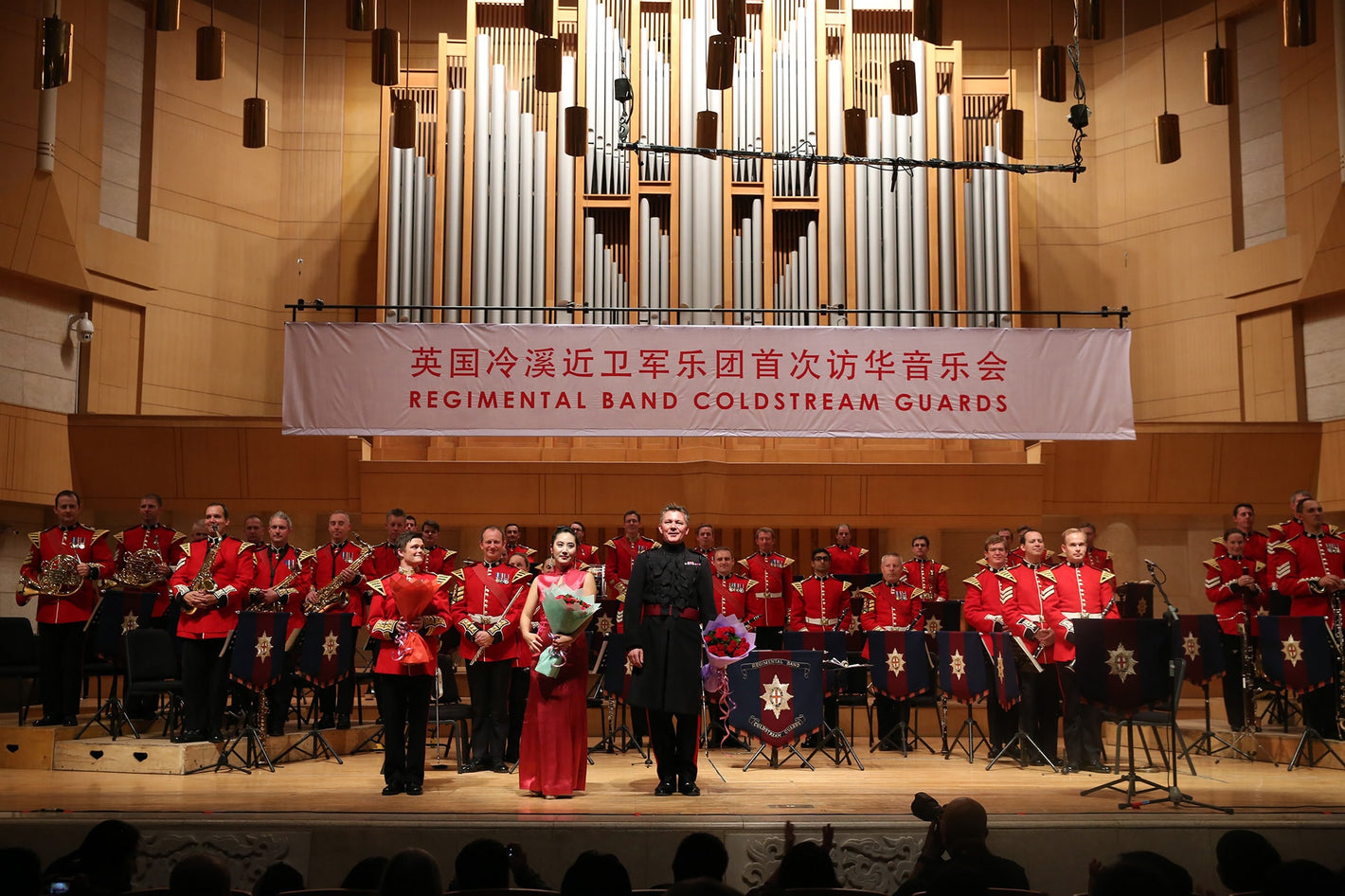-
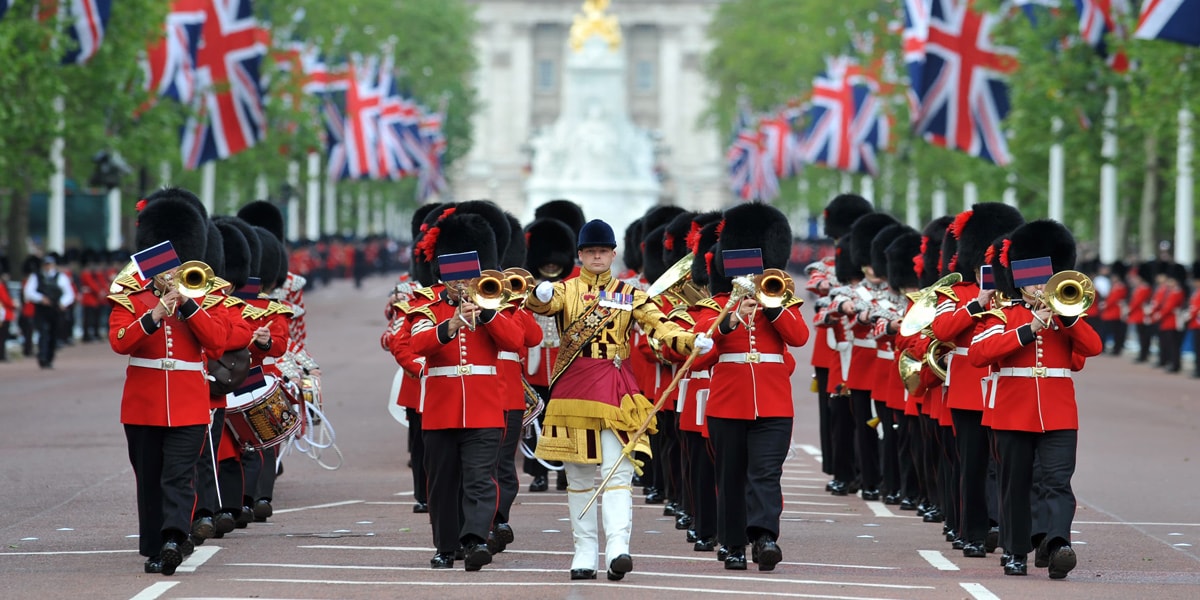
Band of the Coldstream Guards marching down the Mall in London
Coldstream Guards Band
The Regiment had drummers and a "Band of Music" from 1742, formed of eight civilian musicians who were hired by the month by Officers of the Regiment to provide music for the Changing of the Guard at St.James' Palace.
Then, in 1785, the musicians were asked to perform at an aquatic excursion to Greenwich, they declined on the grounds that the performance was "incompatible with their several respectable and private engagements."
This was too much for the officers who asked the Duke of York, Colonel of the Regiment, for a regular attested band. He agreed and from Hanover in Germany sent twelve musicians under the direction of Music Major C.F. Eley. The instrumentation consisted of two oboes, four clarinets, two bassoons, two horns, one trumpet and a Serpent. The date of the band's formation was May 16th, 1785.
-
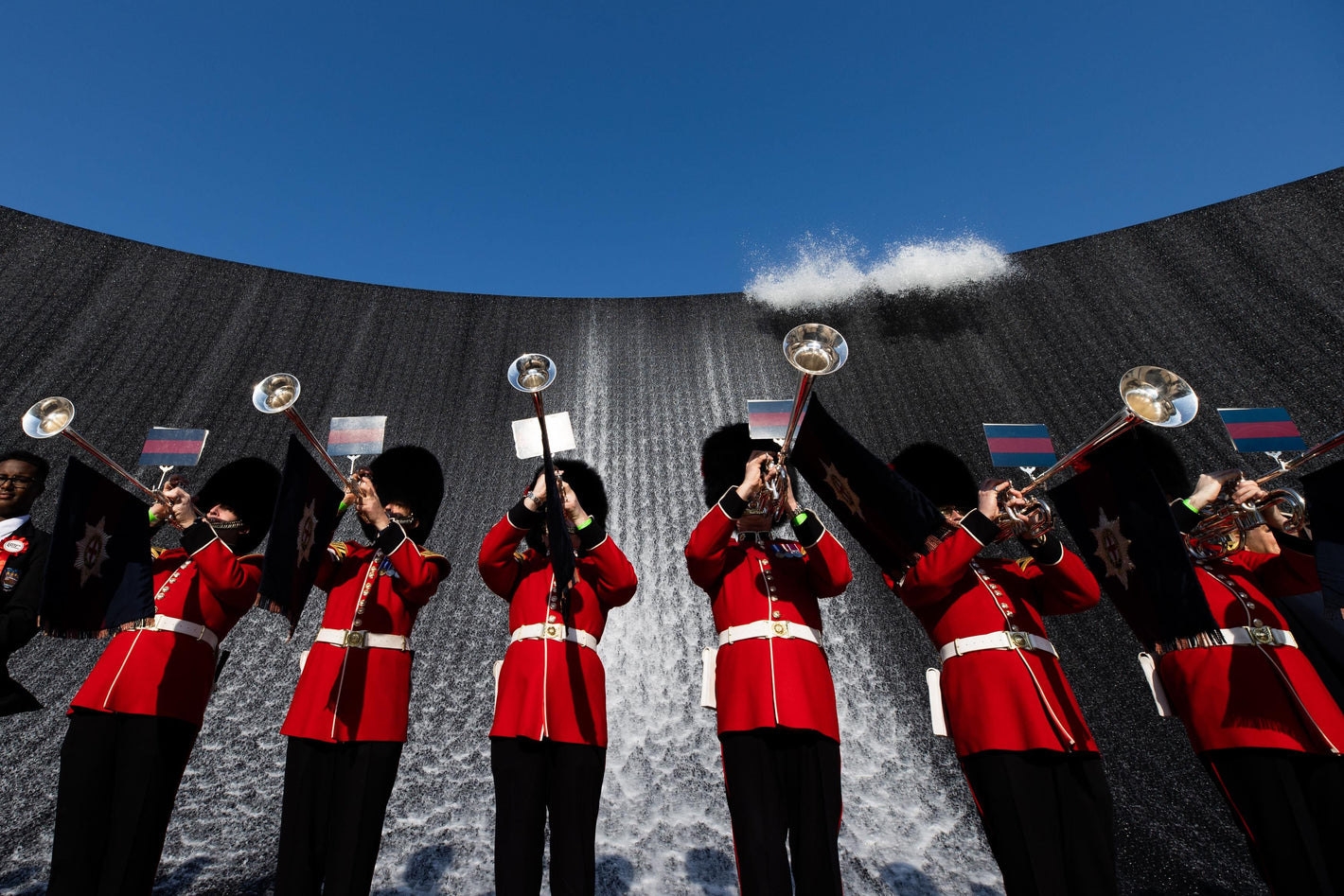
Dubai Expo: The fanfare team performs on UK National Day at the World Expo in Dubai
-
The Victorian era
In 1815, the year of the Regiment's distinction at Waterloo, the total strength of the band was increased to twenty-two by the addition of flutes, key bugles and trombones. In the same year the band went abroad for the first time when it was ordered to Paris for duty with the Allied Army of Occupation.
In 1896 John MacKenzie Rogan took over as Director of music and it was he who ushered the band into the the twentieth century. By 1900 the size of the band had grown to fifty-one musicians and during the years before World War I the band reached new heights of excellence in concert and on record. In fact, the band was the first to make a recording on a wax and cylinder disc in 1898, and went on to be one of the most prolific bands worldwide to record music in the 1900s, 1910s and 1920s.
The Coldstream Guards Band became the first band to visit North America when it travelled to Canada in 1903, one of two western tours around that time.
The outbreak of the Second World War
At the outbreak of the Second World War in 1939 the familiar scarlet tunics were replaced by khaki, and during the war the band did important work encouraging the morale of troops and civilians throughout the country.
It was on Sunday, June 18, 1944 that the greatest tragedy in the history of the Band occurred. The Band was playing in the Guards Chapel, Wellington Barracks when it was struck by a German VI Flying bomb. Over 120 people were killed, including the Director of Music, Major Windram, and five musicians. Despite this disaster the Band continued to function until the new director of Music, Captain Douglas Alexander Pope was appointed. One of his first duties was to follow the Allied forces to Europe after D-Day.
-
Coldstream Guards Band now
The modern band consists of 54 musicians and one officer, Director of Music, Major Stewart Halliday. Musicians are cap-badged as part of the Royal Corps of Army Music, but remain affiliated to the Coldstream Guards, wear the ceremonial uniform of the Coldstream Guards and carry the drums, with Coldstream Battle honours emblazoned on them. Musicians can be trickle posted around other Army Bands, for career and welfare reasons, but generally in order to maintain ethos continuity of the Band, cohesion and teamwork, it is preferred that individual musicians remain in post. The Band has toured Japan and China and undertaken the International Military Tattoo in Avenches, Switzerland in the last 5 years. The Band continues to lead the way in terms of producing, recording and promoting the very best of military music; the Guards Chapel Music Festival series, which features many of the Band’s expert eclectic ensembles and annual St George’s Day concert are firm favourites with military band experts and music fans of all ages.
-

Izumo Taisha Shrine Japan: Ready to step off at the Izumo Taisha shrine in Japan
Further Reading
-

-
Click here
If you wish to see more history of the band written by John Gleeson,
-
Click here
If you wish to see a complete discography of the early recorded music of the Coldstream Guards Band, pre-1960, compiled by Bill Dean-Myatt,
Sounds
The Coldstream Quick March is Milanollo (Val Hamm).
The Slow March is Extract from The Marriage of Figaro (W A Mozart).
Click below to hear them.
Contact the band
Band of the Coldstream Guards, Wellington Barracks, Birdcage Walk, London. SW1E 6HQ
